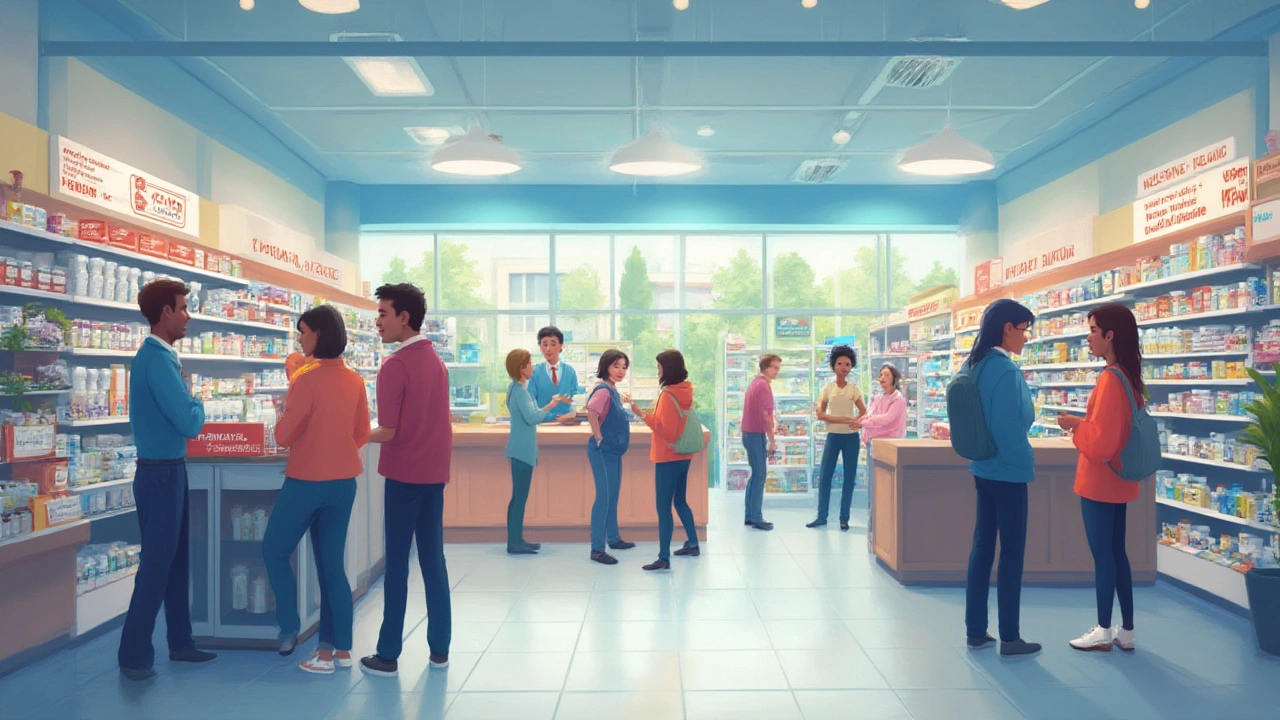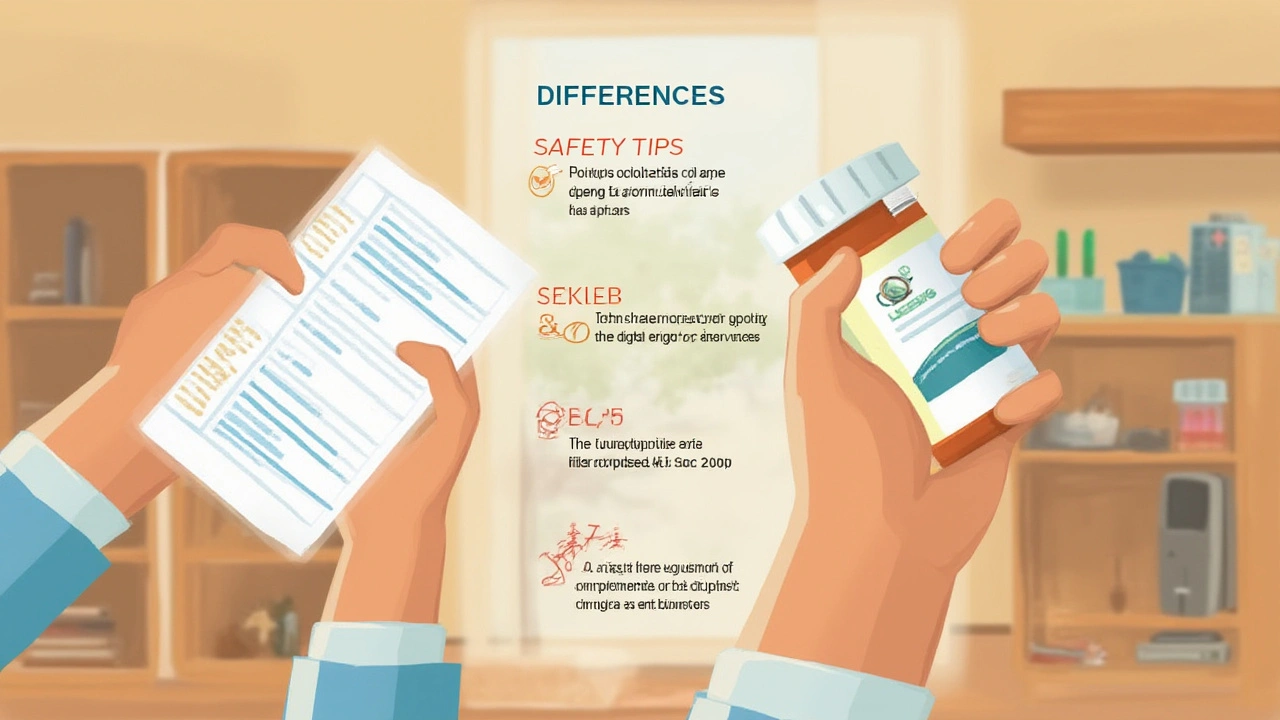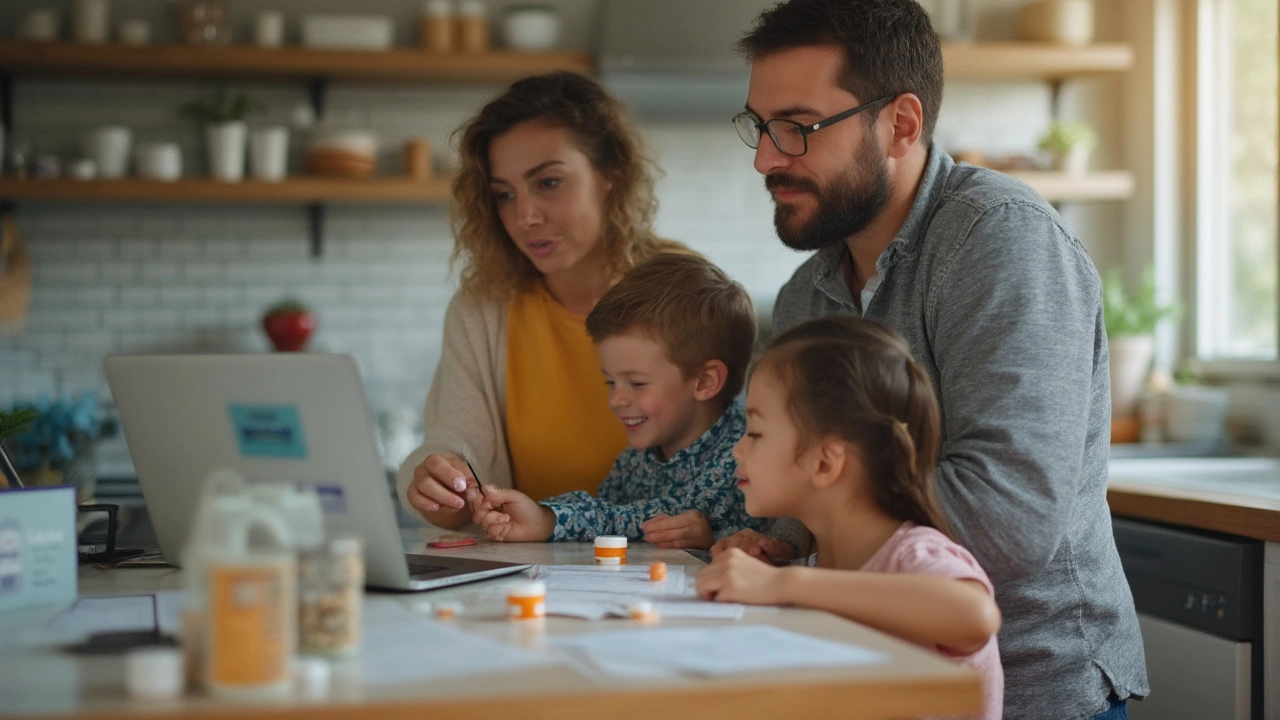Prescription Drugs vs. OTC Drugs: Key Differences Everyone Should Know

Imagine waking up with a killer headache. Your first instinct? Dig through that top drawer for a bottle of painkillers you picked up at the store. But if your doctor wrote a script for something stronger, you’d have to trek to the pharmacy counter, chat with a pharmacist, and flash your ID. Ever stop to wonder why some meds are just tossed in a shopping cart while others demand all that extra red tape? The truth is, a lot rides on whether a drug is prescription-only or over the counter (OTC). Here’s where things get interesting: the difference isn’t just paperwork or price—it’s about medical safety, government regulations, health risks, and how much responsibility you’re trusted with as a patient.
What Makes a Drug Prescription-Only or OTC?
Let’s break it down. Prescription drugs are those meds you can ONLY get if a licensed healthcare pro—like a doctor, dentist, or nurse practitioner—gives you the green light. Pharmacies keep these behind the counter, and they only hand them over once your prescription is verified. It sounds rigid, but there’s good reason. Prescription meds almost always carry a higher risk for side effects or dangerous interactions. Some are potent enough to cause serious harm if you take too much or mix them with other stuff. Others have potential for addiction. Think opioids, some antibiotics, anti-depressants, blood pressure pills, birth control pills, and insulin for diabetes. The list’s long because there’s a lot to protect.
On the flip side are over-the-counter (OTC) drugs—the ones lining the shelves, from allergy tabs to heartburn chews. All OTC drugs have passed rigorous safety and effectiveness tests, reviewed by the U.S. Food and Drug Administration (FDA) for the U.S. or similar agencies worldwide. Drug makers need to prove they’re safe enough for folks to use without a doctor’s help or close follow-up. Instructions have to be super clear, with easy-to-read labels and detailed warnings about what not to mix or how much to take. It’s still not a free-for-all—just a sign these medications aren’t likely to go wrong when used as directed. If there’s ever doubt about a drug’s risk, it stays prescription-only. Sometimes, though, drugs move the other way: many allergy remedies and heartburn medicines started as Rx-only and became OTC years later, following years of proving themselves safe in the wild.
Now, here’s where things get especially interesting. Ever heard of pseudoephedrine? It’s the stuff in some cold meds. You technically don’t need a doctor’s slip for it, yet you have to ask the pharmacist and show your ID—because it can be used illegally to make methamphetamine. The law doesn’t play favorites: some meds blur the lines, so don’t assume every shelf medicine is a total free-for-all, either. Regulations constantly adapt as science (and people) find new ways to misuse medications.

Risks, Benefits, and Unseen Dangers of Each
Nobody wants to deal with side effects, but they’re a very real concern every time you put something new in your body. Prescription drugs are powerful tools. Because of their strength—and the possibility they’ll mess with other medicines, chronic health issues, or special diets—doctors want to monitor you closely. Think cancer chemo, heart meds, or drugs for seizures. Too much or too little can be a disaster. Even less risky options might require blood tests, adjustments, or instructions only a pro can give. Side effects range from mild annoyances like sleepiness or dry mouth, to things so serious they can land you in the ER. Some drugs have black box warnings, meaning life-threatening risks aren’t just possible, but have definitely happened.
With OTC meds, the script changes. You’re trusted to use them wisely, but they’re not totally risk-free. Take acetaminophen (Tylenol) as a classic example—a lifesaver for headaches, but deadly on the liver in high doses or if combined with alcohol. Ibuprofen and aspirin, also over the counter, can mess with your stomach lining or cause bleeding if you go overboard. Antihistamines for allergies? They’ll leave some people sleepy or dizzy, which gets dangerous behind the wheel. It’s wild how easy it is to “double dip” if two different products contain the same active ingredient and you don’t notice. Poison control centers in the U.S. get around 100,000 calls a year about accidental overdoses on OTC medicines—mostly from people who just didn’t realize what they were doing. And it’s not just adults—kids gobbling up tasty gummy vitamins has sent emergency room visits soaring.
Ever notice sections of a drugstore with age limits or security tags? That’s another clue about the risk level. Some cough syrup brands get locked away because teens may abuse them to get high. Even seemingly harmless stuff like topical creams can cause problems if used too often. The point? Self-medicating seems simple, but the line between helpful and harmful can be thinner than folks think. If there’s any doubt—ask your pharmacist. They’re trained to spot potential problems, and it’s literally their job to help you avoid turning an itchy throat into a bigger headache.

How to Use Medications Safely—and Stay Out of Trouble
If you take away nothing else, remember this: whether you grab your meds off a store shelf or from behind the pharmacy counter, both need respect. The FDA estimates there are over 300,000 OTC drug products on the U.S. market today, but each has labels packed with specific advice. The best rule? Read those instructions even if you’ve used the medication a hundred times before. Labels change, your health changes, and interactions aren’t always obvious. If you’re combining medications—like cold pills and allergy meds—check the active ingredients so you don’t double up. Some drugs hang out in your body longer than you think. Acetaminophen, for example, shows up in at least 600 different products. A study in 2022 found alarming numbers of people land in the hospital from unintentional overdoses while taking just what multiple boxes say is a "normal" dose.
Keep a running list of everything you take, even if they seem harmless—supplements, vitamins, prescription meds, the works. When you meet with your doctor or pharmacist, show them your list. Don’t leave things out to save time; weird interactions can hide in the smallest details. Stick to one pharmacy if you can. Their computer systems are actually really good at flagging dangerous combos or scams, catching problems even your doctor might miss.
- Don’t crush, split, or mix pills without asking a pro—it can mess with how the drug works (some need that coating to release slowly).
- If a drug label warns about drowsiness, skip alcohol and see how you react before hopping behind the wheel.
- Handle your prescription meds exactly as told. Resist the urge to keep leftovers for “just in case” moments—expired meds can be risky or less effective.
- If you want to try an herbal or natural supplement alongside your medication, always check with your doctor first. Natural doesn’t always mean safe.
- Store your meds away from heat, moisture, and most importantly, away from kids and pets (those childproof caps aren’t foolproof!).
- Be extra cautious ordering meds from online sites that don’t require a prescription, especially for drugs like antibiotics or painkillers. Many of these are fake, contaminated, or just the wrong dose. The U.S. FDA has flagged thousands of shady pharmacies running these tricks.
There’s a myth floating around that “OTC means safe” or “prescription means dangerous.” That’s far from the truth. The key difference is really about which medicines we, as a society, trust people to take without a doctor peeking over their shoulder. The rules help protect but can’t safety-proof everything—so ultimately, it’s up to you to read, ask questions, and pay attention to your body’s signals. If something feels wrong, don’t shrug it off. Doctors and pharmacists have pretty much seen it all, and they're your best resource if you ever start feeling side effects or aren't sure about a med.
Navigating the line between prescription and OTC drugs isn’t just about picking the right box. It’s a dance between personal responsibility, regulation, and science constantly proving what’s safe—and for whom. If you ever find yourself unsure, err on the side of caution. There’s no shame in double-checking. After all, it's your health on the line—and with a little attention, that top drawer full of pills and powders won’t be quite so mysterious.